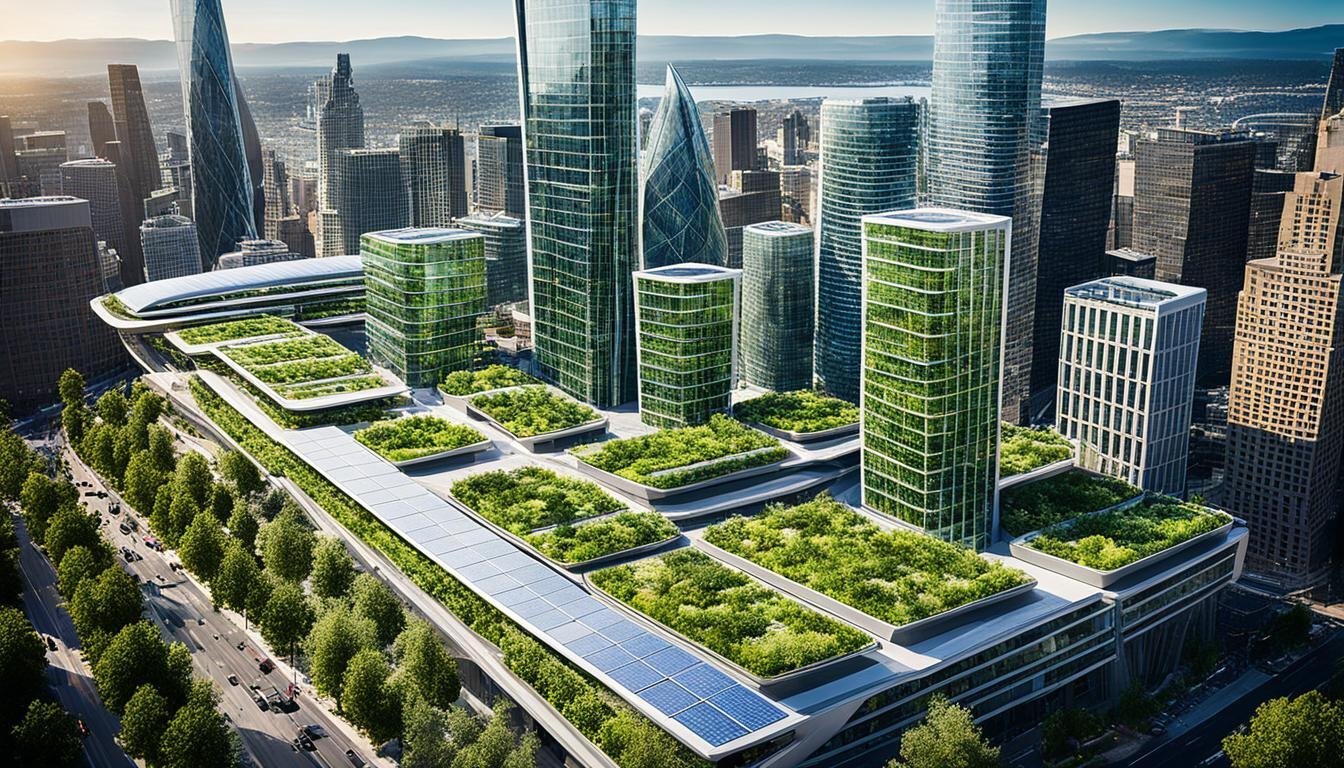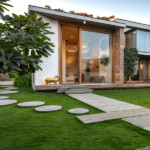The world of architecture is changing fast, led by visionary designers like Barbara Bestor, FAIA. She is the heart and mind behind Bestor Architecture. Bestor has spent more than three decades pushing the design barriers. Her work fuses art and cutting-edge ideas to interact with our cities like never before.
Ashes & Diamonds Winery in Napa and the update of the famous Silvertop house by John Lautner are just a few of Bestor’s many projects. Her designs are all about modernizing how we live and enjoy culture. She uses concepts from landscape architecture and urban planning, adding in hints of green technology. The result? Outdoor spaces that feel like a natural part of our cities.
Key Takeaways:
- Barbara Bestor, FAIA, is a key name in changing how we see architecture, mixing it with various creative fields.
- Bestor Architecture is known for its bold, forward-thinking design process that connects with our cities in new ways through art and progress.
- Bestor’s work varies, but it all aims to make modern living and cultural activities better through design.
- Her approach includes the latest in sustainable, green design to blend outdoor spaces with city life.
- Bestor’s designs offer beautiful outdoor areas that naturally become part of our urban areas.
Pioneering Architects Reshaping Urban Landscapes
The architectural scene in Los Angeles owes much to modernist pioneers. These architects changed the city’s design forever. Architect Barbara Bestor reflects on their work. She looks at their influence and how they shaped our views on indoor-outdoor living and building sustainably.
Barbara Bestor: Redefining Modernism in Los Angeles
Barbara Bestor leads Bestor Architecture and believes in mixing architecture, landscapes, and city structures. Her unique designs have challenged what we think of modern buildings. They bring art and freshness to LA’s urban surroundings.
Bestor Architecture: A Continual Dialogue with the Past
Her firm’s projects range from the famous Ashes & Diamonds Winery to updating John Lautner’s Silvertop house. These works breathe new life into modernism for today’s lifestyle and culture. They are inspired by the city’s architectural legacy and by greats like Frank Lloyd Wright and Richard Neutra.
Embracing Diversity and Integration in Modern Architecture
Bestor believes in mixing different parts of design to create something new. She blends indoor and outdoor spaces, green building methods, and a deep understanding of what people need. Her work connects built things with natural settings.
Landscape Architecture: Harmonizing Built and Natural Environments
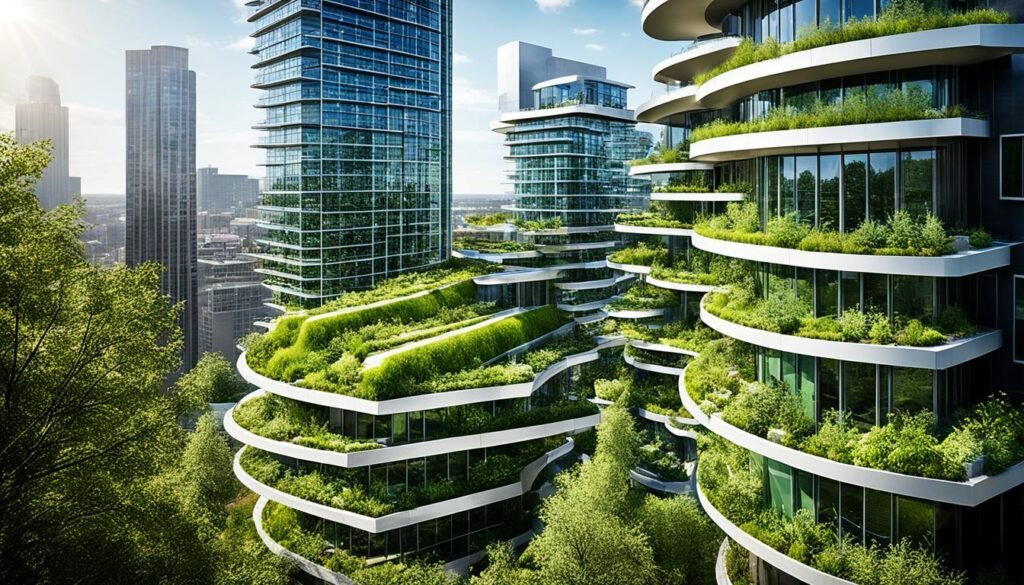
Landscape architecture is key in how our cities and towns look and function. Its goal is to mix buildings and nature well. This art and science work on creating spaces that efficiently use both natural and built parts. It involves knowing how city growth affects the land around us. Experts in this field work together to plan areas around buildings and in whole communities. They work with environmental and water experts to make sure we use our resources wisely.
The Role of Landscape Architecture in Urban Development
Landscape architecture blends city life with nature well. Architects and city planners work together to make beautiful and eco-friendly urban areas. They add things like green roofs and rain gardens to help the environment. This makes cities more energy-efficient and water-friendly. It also helps plants and animals live better in the city.
Sustainable Landscape Design and Ecological Preservation
Landscape architects help our cities fight against problems like too much heat and pollution. They use creative ways to help the environment and make cities better against floods and droughts. By focusing on sustainable methods, we make our cities safer and friendlier for everyone. This way, our cities and nature can live well together.
Architecture Landscape: Planning for Holistic Urban Spaces
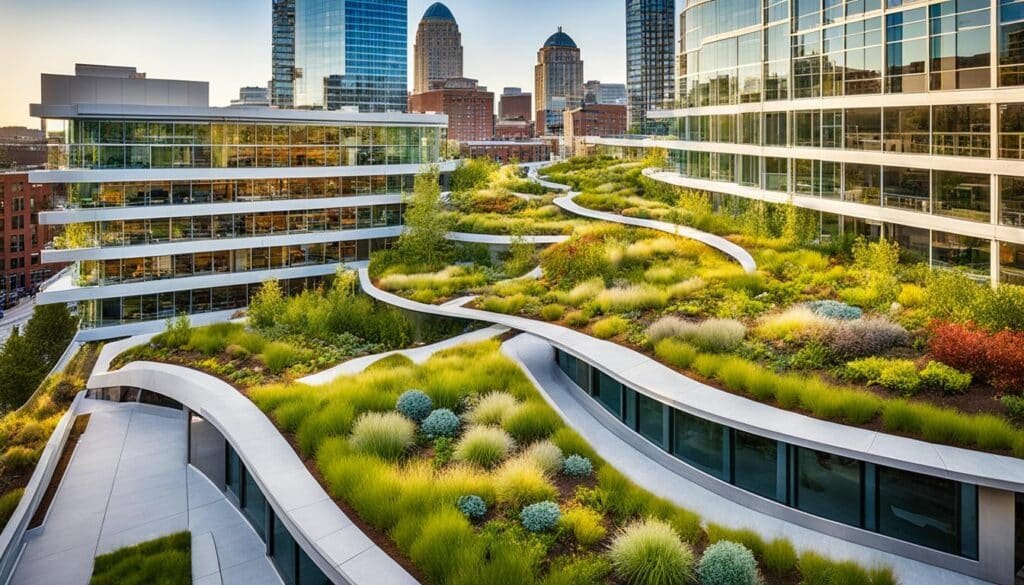
Urban areas keep changing, with lots of elements to consider. Landscape architects strive to strike a balance. They aim to bring about significant change while keeping the environment and people safe. This work starts with studying the landscape. It looks at what the environment needs, and what benefits the project could bring socially and economically.
Studying the Landscape and Identifying Land Use Regulations
Understanding the area’s climate conditions, erosion, and more is crucial. Landscape architects need to know these factors to design well. They also check the land use regulations and zoning laws. This ensures their plans match what’s allowed for residential, commercial, and industrial areas.
Designing Infrastructure with Environmental Considerations
Landscape architects design more than just buildings and roads. They focus on making things in a way that helps the environment. This means thinking about sustainability, ecological preservation, and how it affects the community. Green designs and sustainable methods are key. They help create spaces that are good for people and the earth.
Material Sourcing and Transportation Planning
Choosing where materials come from and how they get there is part of the job. Landscape architects make sure these decisions match environmentally friendly goals. They also look at how to handle the logistical challenges of building in urban areas.
Technological Advancements Transforming the AEC Industry

The AEC industry is in the midst of a digital revolution. New technology is changing how projects are handled and completed. Tools like cloud-based project management and 3D modeling are making work easier for AEC professionals. They are improving efficiency and helping reduce costs. These changes enable them to create solutions that are better for the environment.
Cloud-based Project Management and Collaboration Tools
Cloud-based software is changing how AEC teams work together. It lets them share data in real-time, manage documents, and communicate easily. This makes project management more productive. It leads to better teamwork, clear communication, and sustainable operations.
Drones and 3D Modeling for Efficient Inspections and Visualization
Drones and advanced 3D modeling are transforming site inspections and how projects are visualized. Drones capture detailed footage from the air, making inspections more thorough. 3D modeling creates lifelike 3D visualizations, aiding in better decision-making and engaging clients.
Large Format Architectural Printers for Seamless Plan Printing
Large format architectural printers have made printing blueprints and plans easier and better. They can produce high-resolution, large-scale prints quickly. This makes it easier to share critical design documentation within the AEC industry.
| Technological Advancements | Benefits to the AEC Industry |
|---|---|
| Cloud-based Project Management and Collaboration Tools | Improved data sharing, document management, and team coordination for more sustainable and cost-efficient operations. |
| Drones and 3D Modeling | Enhanced site inspections and immersive project visualizations for better decision-making and client engagement. |
| Large Format Architectural Printers | Seamless production and distribution of high-quality, large-scale architectural plans and blueprints. |
Landscapes of Change: Innovative Designs and Reinvented Sites
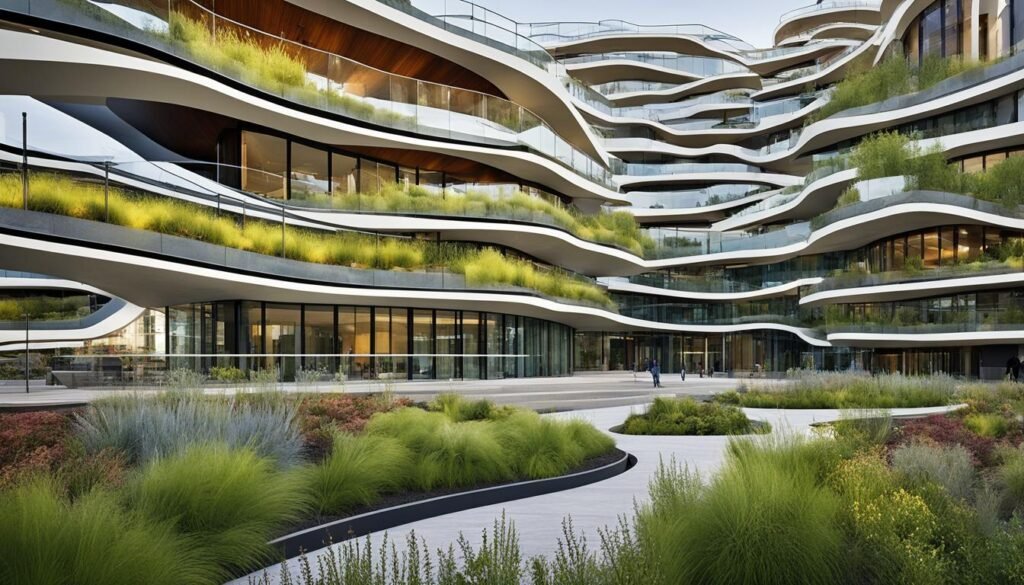
Landscape architecture is changing for the 21st century. It helps connect areas, make homes for animals, help with rainwater, and fight city heat. The book “Landscapes of Change: Innovative Designs and Reinvented Sites” talks about 25 projects. These projects are all about new designs, nature restoration, and working with the community.
Jaffa Landfill Park: Reestablishing Connections to the Sea
The old Jaffa Landfill in Israel is now a lively park, showing how landscape design can give life to dead spaces. By making the landfill a new park, it links up with the Mediterranean Sea. This change offers a fun place for locals, helps cool the city, and lets plants and animals thrive.
Paddington Reservoir Gardens: Urban Refuge and Continuity
In Sydney, the Paddington Reservoir is now a quiet garden. It mixes the old site’s history with new designs. Sunken gardens and water features are part of this project. It turns the area into a special space that builds community and a unique environment.
Buffalo Bayou Promenade: Flood Control and Ecological Restoration
In Houston, the Buffalo Bayou Promenade deals with floods and revitalizes the area. It mixes flood control with nature repair and places for people. This project turns a forgotten waterway into a lively and strong public area. It also helps the local environment and fights city heat.
Architecture Landscape: Multidisciplinary Responses to Urban Challenges
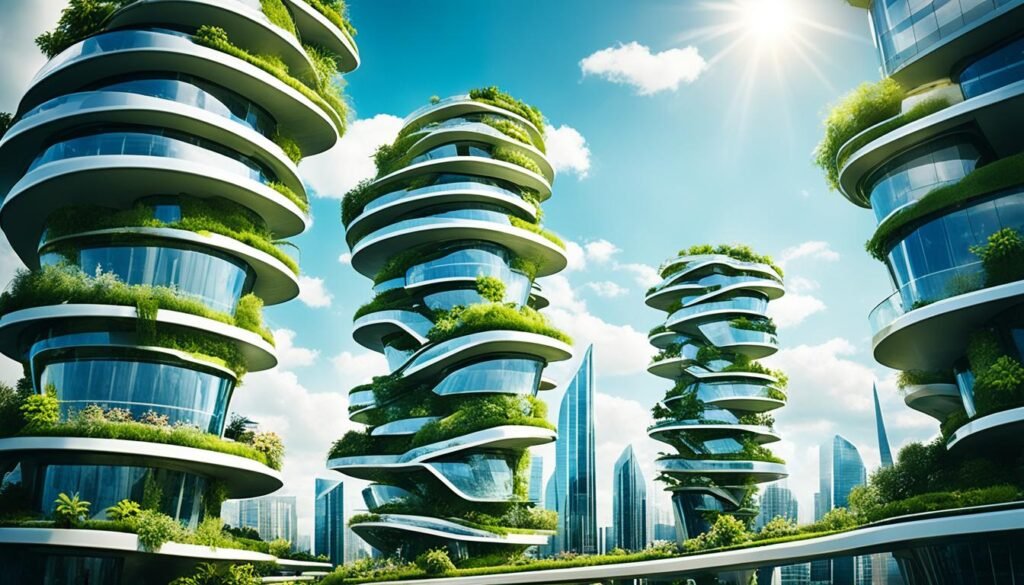
Landscape architects are now focusing on many areas to tackle city problems. They mix architecture, infrastructure design, and art to make spaces that are useful and eco-friendly. The book “Landscapes of Change” looks at amazing projects doing this.
Marco Polo Airport Car Park: Rethinking Parking Lots
The Marco Polo Airport Car Park in Venice, Italy, is not your regular parking lot. Designed by LAND Architects, it combines architecture landscape and infrastructure design to look beautiful and work as a park. The artistic elements, like metal walls and ramps, turn it into a cool public spot that honors the Pacific Northwest ecosystems.
Northala Fields Park: Solving Pragmatic Problems through Art
The Northala Fields Park in London, UK, is a special park. It was made from waste materials to be both useful and artistic. By using these materials to build hills, it became a place for fun and beauty. This project blends artistic elements with practical needs well.
Seymour-Capilano Filtration Plant: Recreating Natural Landscapes
In North Vancouver, Canada, the Seymour-Capilano Filtration Plant was transformed. It turned from a regular water plant into a green, wildlife-friendly place. This shows how a project can look good and help nature.
These projects have won top design awards, showing how powerful their ideas are. They change empty spaces in cities into places we can enjoy, that are good for the earth and the people living there. This is the new way to approach design in our cities.
Ecological Urbanism and Edible Landscapes
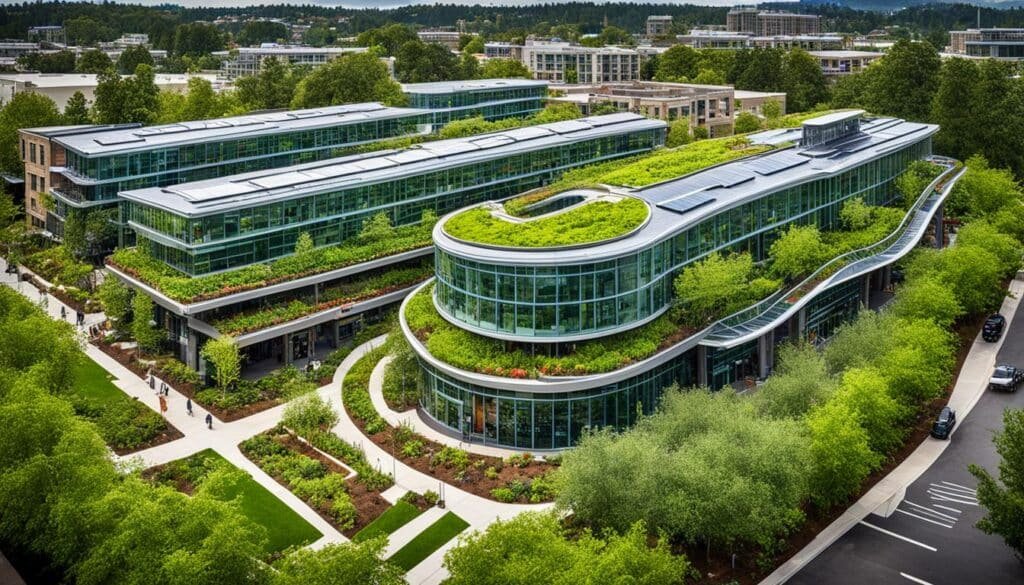
Landscape architecture is key in the new field of ecological urbanism. It mixes ecological functions with fun and community benefits. The book “Landscapes of Change” shows cool projects. They bring together urban agriculture, engineered landscapes, and living areas. This mix makes cities liveable and eco-friendly.
Wijkeroogpark: Engineered Landscapes for Ecological Functions
The Netherlands’ Wijkeroogpark is a great example. Here, landscape architects have used engineered landscapes to help freshwater habitats and brackish marshes. They’ve carefully shaped the land and water to revive the local ecosystem. This brings in many plants and animals. It also gives the community a place to relax.
Gary Comer Youth Center Roof Garden: Urban Agriculture and Education
In Chicago, the Gary Comer Youth Center Roof Garden is doing amazing things. It shows how edible landscapes and urban agriculture can feed people and teach kids. The project won an ASLA award. It has gardens, fruit trees, and places to learn about growing food. This way, students and locals can see how green spaces help the Earth.
Architecture Landscape: Addressing Climate Change Resilience
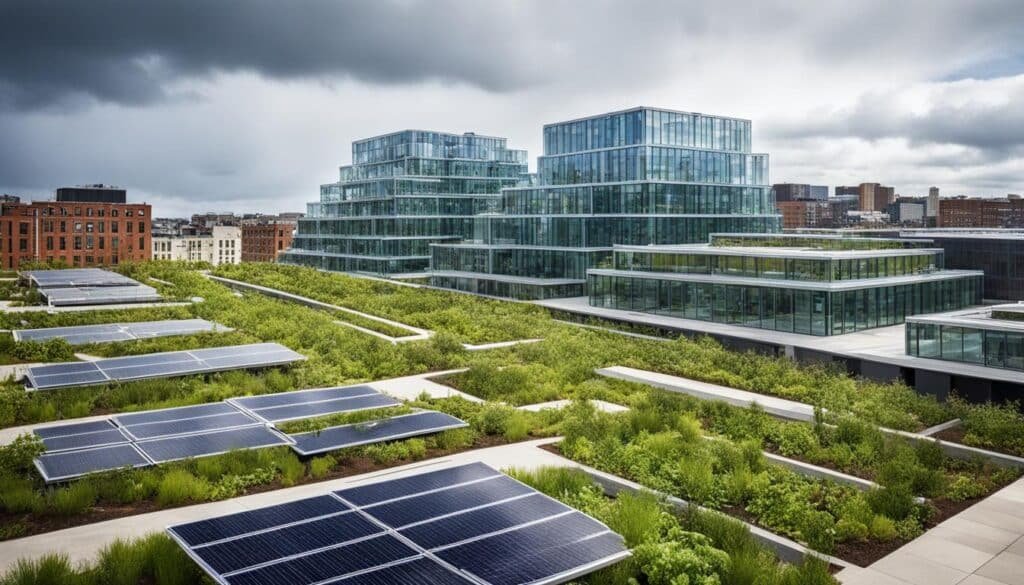
Climate change is making cities face new challenges. Landscape architecture helps by designing sustainable landscapes. These must bounce back from storms, flooding, and drought. The book “Landscapes of Change” shows how different experts are needed to solve these problems.
Today, landscape architects team up with urban planners, engineers, and ecologists. They create green infrastructure to fight climate change in cities. This includes systems to manage stormwater and cool down urban heat islands. The goal is to make our communities stronger and more enduring.
In the Netherlands, the Wijkeroogpark project is a great example. It has special areas for water and plants that can handle sea level rise. The Gary Comer Youth Center Roof Garden in Chicago does something similar. It teaches about farming in the city, helping people grow their own food.
As climate change gets worse, landscape architecture becomes even more important. It brings together many fields to make our future cities resilient and sustainable. This joined-up approach is key for success.
Sustainable Urban Design and Green Infrastructure

Cities are tackling climate change by focusing on sustainable urban design and green infrastructure. These are key parts of modern landscape architecture. Techniques include stormwater management and fighting the urban heat island effect.
Stormwater Management and Urban Heat Island Mitigation
Strategies like bioswales, retention ponds, and permeable paving are important. They help with stormwater, reducing flooding risks. These also support groundwater and save water.
Strategies are also used to combat the urban heat island effect. Green roofs, rain gardens, and tree canopies help regulate temperatures. They make cities look better, support biodiversity, and help communities.
Green Roofs, Rain Gardens, and Permeable Paving
Green roofs benefit by reducing stormwater, cooling cities, and supporting nature. They offer insulation, improve energy use, and help wildlife.
Rain gardens, with native plants, help with stormwater. They support groundwater and reduce pressure on city drains. Plus, they create homes for plants and animals.
Permeable paving, like pervious concrete, reduces flooding. It also helps lower city temperatures by absorbing less heat. This material manages stormwater better.
| Green Infrastructure Feature | Ecological Benefits | Community Resilience |
|---|---|---|
| Green Roofs | Stormwater management, temperature regulation, habitat creation | Energy efficiency, urban cooling, biodiversity support |
| Rain Gardens | Stormwater filtration, groundwater recharge, wildlife habitat | Flood mitigation, water conservation, ecological connectivity |
| Permeable Paving | Stormwater infiltration, reduced runoff, temperature regulation | Flood control, urban heat island mitigation, water management |
Landscape architects improve cities by using these strategies and elements. They not only fight climate issues but make cities better to live in. These solutions are crucial for a more sustainable future.
Also Read : Smart Room Design Ideas For Small Spaces
Landscape Architecture Trends and Future Directions
Now, landscape architecture is seeing new trends like biophilic design and healing gardens. These new ideas are changing how we use outdoor spaces. They make our connection with nature stronger.
Biophilic Design and Healing Gardens
Biophilic design includes nature in our buildings and outdoor spaces. It has become more popular recently. It helps us feel more at one with the natural world. Features like living walls and native plants are used to make us feel better and less stressed.
Healing gardens are also on the rise. These special outdoor areas are made to help people heal in body and mind. By working with doctors, landscape architects can design these places to meet the needs of patients and others. They use things like water features, calm plants, and places for quiet to make healing faster and hospital visits better.
FAQs
Who is Barbara Bestor and what is her role in the architectural landscape?
Barbara Bestor is a key figure in architecture. She is the Principal at Bestor Architecture. Over thirty years, she made a mark. Bestor’s work mixes architecture with art and innovation, making it unique.
How has Barbara Bestor’s work been influenced by the modernist architecture in Los Angeles?
Modernism deeply influenced Bestor’s work in Los Angeles. She’s inspired by pioneers like Frank Lloyd Wright. Their focus on connecting indoor and outdoor spaces influenced Bestor. She also finds inspiration in the city’s modern architecture history.
What is the role of landscape architecture in urban development and planning?
Landscape architecture helps shape cities and towns. It involves designing outdoor spaces. This includes green areas and places for people to gather. It’s not just about making things look good. It’s about the environment too.
How do landscape architects approach the design process to create sustainable and resilient urban landscapes?
Landscape architects create spaces that are both big and safe. They carefully plan to meet environmental needs. They consider the local climate and how to protect natural resources. This approach helps make cities and towns better for people and the planet.
How are technological advancements transforming the AEC (Architecture, Engineering, and Construction) industry?
New technology is changing the AEC industry. Company processes are becoming more modern. Cloud-based software helps teams work together easily. Drones aid in inspections. Creating 3D models makes it easier to see how projects will look.
What are some innovative landscape architecture projects featured in the book “Landscapes of Change: Innovative Designs and Reinvented Sites”?
Landscape architecture is adapting to the 21st century. It’s now creating spaces that connect people and nature. The book “Landscapes of Change” shows 25 projects that do this well.
How is landscape architecture contributing to the field of ecological urbanism?
Landscape architecture is helping to create green, functional cities. These landscapes do more than look pretty. They help the environment and people. A book called “Landscapes of Change” details this work.
How are landscape architects addressing the challenges of climate change in urban environments?
With climate change, cities need to be more resilient. Landscape architects are designing spaces that can handle extreme weather. The book “Landscapes of Change” explains how they do this.
What are some of the key sustainable design techniques and green infrastructure elements used in modern landscape architecture?
Modern landscape architecture focuses on being environmentally friendly. It uses special designs to manage water, control heat, and support plant and animal life. This helps make cities greener and healthier.
Source Links
- https://largeformat.hp.com/au/blog/the-importance-of-landscape-and-urban-planning-in-architecture
- https://disruptmag.com/exploring-urban-innovation-barbara-bestor-and-bestor-architectures-impact-on-the-los-angeles-landscape/
- https://www.smartcitiesdive.com/ex/sustainablecitiescollective/landscape-architecture-changing-world/1034316/
